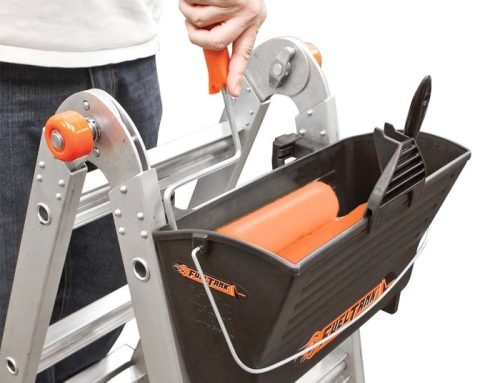Whether
you’re a regular or infrequent ladder user you’ll know that one of the most
important skills involved in staying safe on a ladder is balance. It’s one thing to get the ladder set up and
balanced properly, but our own personal sense of balance is what keeps us safe
while we work at height. There are several
medical reasons as to why a person’s sense of balance may be impaired,
including ear infections and low blood sugar, but poor posture and weak muscles
can also contribute to a lack of balance.
That’s something we can address ourselves.
Ideally when
we need to work up a ladder for long periods of time we’ll be able to use a
platform ladder with a wider surface on which to stand, or avail ourselves of
an accessory like a universal ladder platform to make any leaning ladder more
comfortable for extended periods of use.
If that’s not an option or you just need better balance for short,
intermittent periods of ladder use then some simple exercises can help.
The most
important muscles for balance are the many muscles that make up the core. All too often people think that core stability
is a job for the abdominals, but every muscle from our shoulders to our hips
(and even into our glutes) is part of the core.
Pilates is a great way to increase core strength through a range of
movements and it doesn’t involve weights, machines or gym equipment. When training your core, plank exercises are
the most punishing yet effective option, working many muscles intensely. Side planks are the hardest, so work up to
these.
For better
balance on a ladder the strength and flexibility of our lower legs is also
vital. Our thighs need to be strong to
be able to endure long periods of tensing and flexing, so focus on exercises
that work the muscles from the hips and glutes down to the knee. Squats, lunges, kettlebell swings and bridge
position exercises are all great for working these areas. For a more challenging workout add weights to
increase the resistance.
Having
flexible hamstrings might not improve your balance per se, but it will ensure
you get the most out of the strengthening exercises you do. Make sure to include hamstring stretches as
part of your warm up and cool down – you want to be able to touch your toes or
ideally, place your hands flat on the floor in front of your feet.
Practising
your balance can be done by using a wobble board – a piece of inexpensive gym
equipment that you stand on and attempt to stay upright. This tests your reflexes and ability to right
yourself when you become unsteady. Once
you can balance on the wobble board well, try throwing and catching a ball
against a wall, or doing some squats, to really test your balancing
abilities. You can also test your
balance by standing on one leg and throwing and catching a ball against a wall. These challenges test your balance and
ability to carry out another task while maintaining your balance, which is
exactly what you’ll be doing up a ladder.
Being as
stable as possible up a ladder makes every second we spend at height much
safer. The long term health benefits of
improving our balance and strength are an added bonus, reducing our risk of
falls as we get older, and keeping us fit and strong well into later life.






Leave A Comment
You must be logged in to post a comment.